
Bulletin 3 (II:1), 1964
Home
Français
Introduction
History
Annual Index
Author &
Subject
Credits
Contact

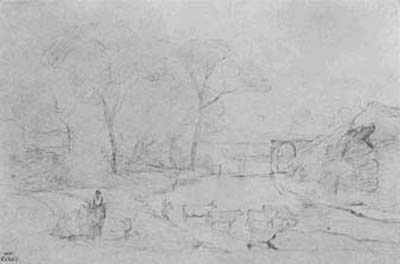
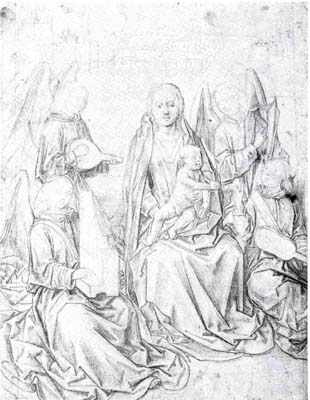
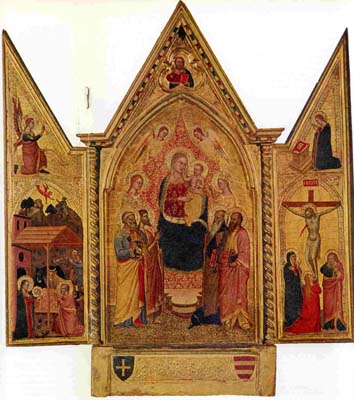
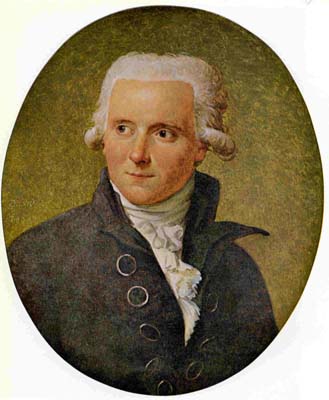
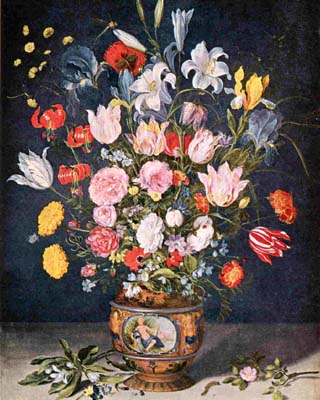
Recent Acquisitions
Nouvelles acquisitions
Pages 1 | 2
This selection of recent acquisitions by the National Gallery of Canada,
presents some of the more important works purchased during the past year.
The subject, taken from the tragedy of Medea, represents the
Angel of Mercy restraining Medea as Folly on her throne incites her to
strike while Reason and Virtue flee. The interpretation is that of Professor
Rudolf Wittkower. The drawing is reproduced in Portalis' standard work
on Fragonard and is listed there among the principal drawings of
the artist. It was presented to the National Gallery by the Royal Trust
Company of Montreal.
This drawing which was formerly in the collection
of Lord Milford and Sir John Phillips is one of the most important acquisitions
made in recent years for the National Gallery's collection of drawings.
It corresponds fairly closely with the left wing of a small diptych in
the Alte Pinakothek in Munich which Friedländer regarded as probably a
production of Memling's studio.
As the number of Flemish drawings of the fifteenth century which
are known to be by a definite artist is very small and in the absence of
any drawing which can be definitely attributed to Memling, there is no
certainty as to whether the present drawing is an original by the master
or a copy from the painting. But as Mr A. E. Popham has pointed out, closely
as the drawing corresponds with the Munich picture, its quality is extremely
high and there are none of the small misunderstandings of the original
which normally betray the copyist. Although the way in which Memling's
studio was organized is not known, it may possibly have been his practice
to provide his assistants with drawings of this kind from which they were
instructed to produce paintings.
A pencil sketch related to the painting of 1827 of the same title
acquired by the National Gallery in 1940. The drawing differs from
the painting mainly in the foreground on the left with its
additional figures and in the presence of the cattle in the river.
Jacopo di Cione (active 1365-1398) was a younger brother and
follower of Andrea Orcagna (c. 1308-1368), the Florentine architect,
sculptor, and painter of the mid fourteenth century. Three documented pictures
by Jacopo exist: the St. Matthew Altar-piece, in the Uffizi, the
side panels only are by him; the San Piero Altar-piece of 1370-1,
parts of which are in the National Gallery, London; and the Coronation
of the Virgin of 1373, in the Academy, Florence, which he executed
in collaboration with others. Berenson assigned some fifty paintings to
Jacopo. This triptych, which at one time was in the collection of Prince
Murat, Paris, is in an excellent state of preservation and the first of
its kind to enter the National Gallery collection.
"It is to Riopelle's credit that he has created a stylistic métier
which unites the vitality of nature with formal balance. Compact and varied
palette knife strokes vibrate, shift, finally to harmonize and wedge themselves
into chromatic zones of opposing movements; it is precisely in such dynamic
compositions that Riopelle's poetic being asserts itself." These lines
by Franco Russoli may be used to describe Pavane. This is a major
work by a contemporary Canadian painter to enter the collection.
This portrait of M. Sériziat is dated 1790 and precedes the
famous portrait of 1795, in the Louvre, Paris, showing him three-quarter
length and dressed in riding clothes. The sitter was the brother-in-law
of David, having married Emilie Pécoul, his wife's sister.
David is one of the giants of French painting, who destroyed the aristocratic
and facile art of the eighteenth century. He established classicism and
was the leader of this style which had the "air of the heroic republic
about it". This new attitude was stern, it breathed a martial spirit, and
immediately had a great following. During the Revolution, the Consulate,
and the Empire, classicism was the accepted style and in some ways has
persisted to the present day in academic art.
Edmund Alleyn studied at the Ecole des Beaux-Arts, Quebec, under Jean-Paul Lemieux. He has exhibited at the Guggenheim International Exhibition 1958, the Venice Biennale 1960, and received an Honourable Mention at the Sao Paulo Bienal 1959. For the past few years he has worked mainly in Paris.
Jean McEwen lives and works in Montreal. He is represented in
Canadian galleries and private collections, and recently the Museum of
Modern Art, New York, acquired his work. Along with three other artists
he was represented in the Canadian entry at the Sao Paulo Bienal 1963,
where he received an Honourable Mention.
This painting is attributed to Jan Brueghel the EIder, who is
called 'Velvet' Brueghel (because of his love of rich materials). Jan was
the youngest son of Pieter Brueghel the Eider, who died in 1569. Jan's
grandmother, Marie de Bessemers, the widow of Pieter Coucke d'Alost, gave
him instruction in drawing. He was a pupil of Pieter Goetkint and worked
in Italy with Paul Bril, and was also active in Prague and Nuremberg. In
1605 he married Catherina van Marienburg, and their daughter, Anna, became the first wife of the painter David Teniers the Younger, in 1637.
Jan Brueghel was for a time court painter to the Archduke Albert and the
Archduchess Isabella, Governors of the Netherlands, and a friend and
collaborator of Rubens. Among Jan's pupils were Daniel Seghers, Lucas de Waal, Abraham
Govaerts, and his son, Jan II.
Jan Brueghel always maintained a remarkable balance between fidelity
to nature and pictorial effect. His flowers are usually arranged to achieve
a striking composition of colours. His Flemish use of paint is thick and
unctuous, and the style is always truthful enough to allow identification
of the various species of flowers.
Paintings by Jan Brueghel are in the Rijksmuseum, Amsterdam, the
Royal Museum, Antwerp, the Prado, Madrid, and the Ambrosiana, Milan.
John Chambers was born in London, Ontario, and studied there
at the H. B. Beal Technical School. He spent five years at the Real
Academia de Bellas Artes de San Fernando in Madrid and was awarded
the State Prize for Painting in 1958. He returned to London,
Ontario, in 1962.
Alan Davie was born at Grangemouth, Scotland, and
studio at the Edinburgh College of Art. His first exhibition was held in London
in 1950 at the Gimpel Fils Gallery. Subsequently he has exhibited in the
United States, Japan, France, Italy, Holland, and Germany. Davie has shown
kinship with certain aspects of German Expressionism but his most recent
work, which is more closely linked with Abstract Expressionism, is powerful
and explosive.
Next Page | Additional
Images
1 | 2
Annual Index | Author & Subject | Credits | Contact
This digital collection
was produced under contract to Canada's Digital Collections program,
Industry Canada.
"Digital
Collections Program, Copyright
© National Gallery of
Canada 2001"